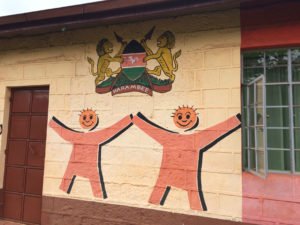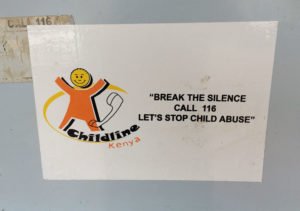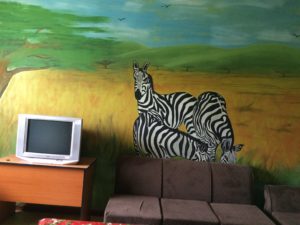
by Diana Onken
A child – alone and afraid – on the streets of Nairobi.
A caring adult sees a child hurt by a parent.
A teacher who reads a note from a child describing abuse by his family.
Before 2005, a child in Kenya suffering from abuse or neglect would have few places to turn. But, thanks to a partnership with the Kenyan government’s Department of Children’s Services, they now have a lifeline – Childline Kenya.
 Childline Kenya runs a free hotline that children or concerned adults can call 24 hours a day and to connect with trained hotline workers who will help them.
Childline Kenya runs a free hotline that children or concerned adults can call 24 hours a day and to connect with trained hotline workers who will help them.
On a cool morning in June, I traveled to the outskirts of Nairobi to visit the Childline Kenya. I met impassioned advocates for children who not only helped tens of thousands of children each year, but used the data and experiences collected from boys and girls to drive change for children.
The staff shared stories of children who lacked access to any kind of phone or mobile device to call or text. To address this, they developed a comment box in rural areas and urban settlements so children could report abuse. Teachers check the box frequently and connect children with Childline Kenya for services.
Realizing that helping children was only part of the equation of ending violence against children, Childline Kenya created an outreach department that speaks to Parent Teacher Associations and community leaders about child protection. Their goal is to stop abuse and neglect before it starts.
 In addition to taking calls on their hotline, they also have a safe house for children who need it. We briefly met the house mom who cares for the children while they are there. Her crinkled smile and gentle demeanor no doubt comforts children who have experienced harm.
In addition to taking calls on their hotline, they also have a safe house for children who need it. We briefly met the house mom who cares for the children while they are there. Her crinkled smile and gentle demeanor no doubt comforts children who have experienced harm.
Childline Kenya doesn’t stop its work at its borders. As child trafficking continues to grow across Africa, they are advocating for other countries to use 116 as their hotline number so children who are trafficked anywhere on the continent can call one number and get help.
As I listened to the Childline staff share the amazing growth and impact of the organization, I thought of my own two young girls. I thought about how afraid and alone they would be if they were trafficked or otherwise harmed by an adult.
My girls inspire me to work for children everywhere. And that’s why I’m proud that protecting children from harm is central to Save the Children’s new global campaign – Every Last Child. Through this campaign, we are advocating for policies and changes in cultural norms to achieve these three guarantees for all children:
- That no child dies from a preventable cause.
- That all children learn.
- That all children be protected from harm.
It’s an ambitious campaign with big goals. We can make change with and for children only if we have hundreds of thousands of supporters working together.